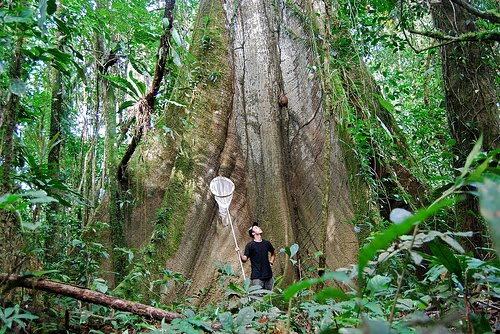Thursday, 20 October 2011
The tropical rainforest is not a place that lends itself readily to simple generalizations, but if I had to chose just one word to describe this place, I’d probably go with ‘diversity’. That’s one of the biggest reasons I’m in Costa Rica – the rainforest here at La Selva contains an almost overwhelming and beautiful diversity of plants and animals. Another dimension of tropical diversity though, one which relatively few people are interested in, is a staggering variety of tropical parasitic diseases. Everyone knows of a few – malaria, for example, is a global scourge caused by parasitic Plasmodium protists that kills nearly a million people a year worldwide. But there are myriad others, and while many are far less dangerous than malaria, they are nonetheless highly problematic and often exceedingly disgusting. An array of fungi attack every imaginable part of the body, like mycosis, which is highly prevalent in the tropics. Other microorganisms, like bacteria, protists, and a large assortment of various tiny worms cause dreadful diseases like leishmaniasis, schistosomiasis, elephantiasis, typhoid, cholera, and Chaga’s disease. Yet others simply feed on the human body without resulting in ‘disease’; one such organism, a small nematode worm known as cutaneous larva migrans, has recently made it my first Costa Rican parasite for 2011!
I noticed it a few days ago, though I thought I had just another itchy bug bite. When the ‘bite’ began to take on a serpentine shape, I started to suspect something more sinister. Sure enough, my symptoms matched perfectly with cutaneous larva migrans, a disease caused by tiny hookworms buried under the skin. The worms are unable to penetrate the deeper layers of the skin, hence the visible pathways they follow as the feed. Whatever they are and whatever they’re doing in me, they itch like crazy and I want them gone!
 |
| Cutaneous larva migrans, the hookworms that are making doodle art out of my hand |
That might be pretty gross, but it’s nothing compared to perhaps the most infamous tropical parasite of all – the botfly. I had the bad luck (or good luck??) of getting four of them this past summer on a trip to Panama. The eggs of the fly are vectored by another insect, often a mosquito – the female botfly captures the mosquito and deposits a number of eggs on her. Then, when the mosquito approaches its warm-blooded host, the botfly eggs hatch and the larvae burrow into the host (in the case of the human botfly, the human) where they develop. When ready to pupate, they simply drop out of the host and then complete the life cycle. I think I may have been bitten by the same mosquito four times, because I had four botfly larvae of approximately equal age, one on each arm, one on my back, and a very painful one on the webbing between two of my fingers. They shift under the skin periodically, causing bleeding and extreme pain. It’s funny – despite that pain and blood, it didn’t occur to me that I even had botflies until I could actually see the larvae breathing through their tiny holes in my skin!
 |
| Baby botfly larva, how cute! |







